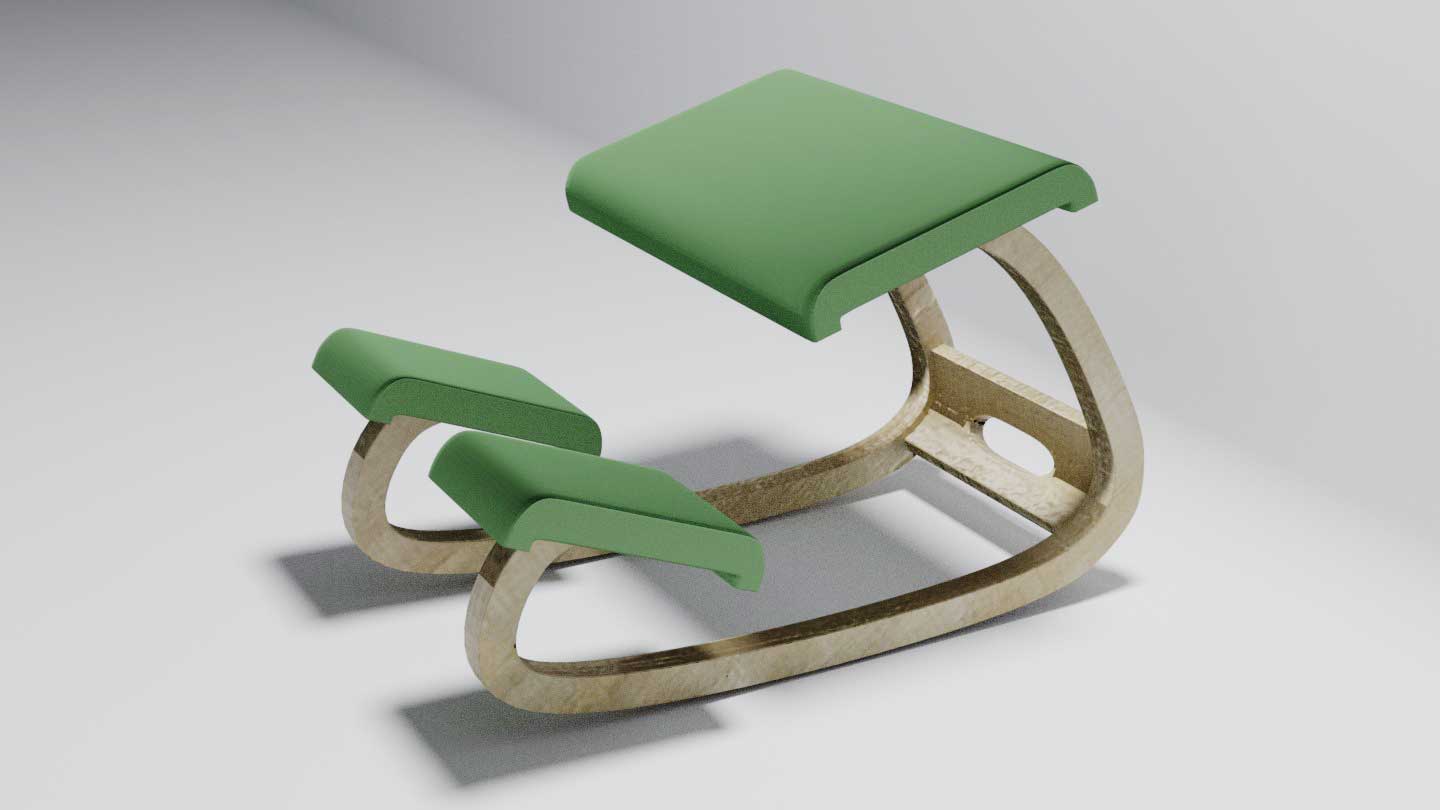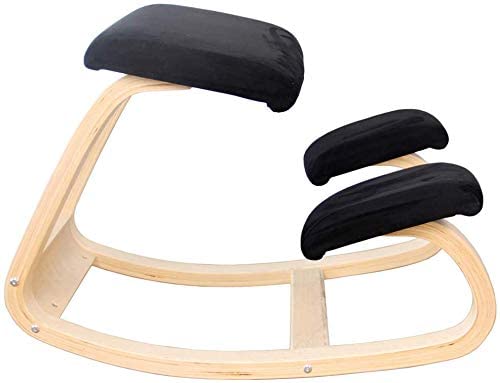Balans: kneeling chairs from Norway
The name

The name of the Balans chair, although pretty transparent in meaning, can be a source of confusion. This name does not belong to a particular design, instead it denotes a class of chairs originating in Norway. Hans Christian Mengshoel was the first furniture designer to put into practice recommendations of some medical professions about preferred postures for sitting humans. Designers Oddvin Rykken, Peter Opsvik and Svein Gusrud came up with their own variations of the same idea, namely tilting the seat of the chair at about 60-70 degrees while providing some form of support for the person’s knees. Terminologically speaking, to describe a chair as a Balans chair is akin to describing a different type of chair as an armchair. There may be very different looking armrests, but they all perform the same function. The function of a Balans chair is to provide us with a different way of sitting, hopefully to alleviate some chronic lower back conditions and to generally improve the posture. Modern kneeling chairs have a number of different names, which sometimes makes it difficult to research a purchase.
The design
It must be stressed that a typical kneeling chair will not win a design competition based on looks only. The visuals of these furniture pieces is driven almost entirely by their function. The slanted seat cushion looks so unusual that an unaccustomed person might not know what the whole thing is. The predominant shapes that form a Balans chair are curved, as a nod to many modernist styles, but there is hardly a particularly pleasing effect achieved by this.
Are kneeling chairs comfortable?
One thing to understand is that kneeling chairs are not designed for extreme comfort. Above all, they address a health need. The first time you sit in a Balans chair you might feel very much out of sorts. For the first minute or two you might strongly regret the purchase. The key thing here is to find some task and begin working. After all, these chairs are not for relaxation. They are for work and study. Give it an hour or two and you might feel that you are not as tired as you thought you would be. You may physically experience your posture improving. The biggest adjustment might be getting used to your knees constantly being in touch with the pads (or a single pad or even a puffy roll, if that might be the case). It is often repeated that in a kneeling chair the weight of the body is not actually placed on the knees. That may be true, but your body will inevitably keep sliding down and the surface underneath your knees is there to stop you from falling on the floor. It is not entirely impossible to develop soar knees.
Do kneeling chairs really work?
From personal experience, these chairs are indeed helpful. Don’t take it as medical advice, but even conditions such as sciatica or a pinched piriformis nerve can be alleviated or prevented by the use of kneeling chairs. It is crucial to remember, however, that, just as the name Balans implies, your use of sitting surfaces needs to be varied. Do not make a kneeling chair the only chair you use for work. It might be a good idea to switch from it to a more traditional chair several times a day.
How to buy a Balans chair?

As already mentioned, you really need to experience a keeling chair before you know if it is right for you. So, try to borrow one or find a place where there is one that you can use. If you like the feel in principle and the idea of improving your posture seems like a solid proposition, then you are ready to invest. However, keep in mind that these are very utilitarian pieces of furniture. They will hardly become the focal objects in your office. You should choose the colors you want, but you just might not have to spend $300 for an official version. There are many cheaper kneeling chairs available at half that cost.